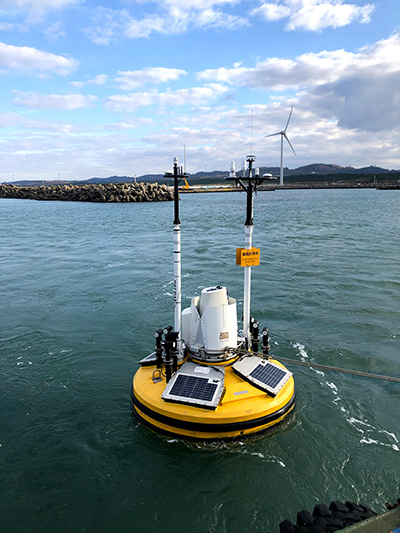The Indian Government has set an ambitious target of quadrupling renewable electricity capacity by 2030. India’s vast coastline offers enormous potential for offshore wind power generation. Bibhu Nayak, Fugro Country Manager India, explains why extensive research, meticulous planning and long-term asset management will be key to harnessing this energy cost-effectively.
India’s energy consumption has been growing steadily and is showing no signs of slowing down. The demand for energy is expected to rise by around 3 % a year, right through to 2040.
The country currently relies on renewable energy to meet 26.4 % of its energy requirements. In November 2021 the Indian Government pledged to increase this to 50 % by 2030.
India – Champion of the Earth
India’s green credentials were validated in 2018 when the world’s first fully solar-powered airport, Cochin International, won the UN’s Champion of the Earth Award in the Entrepreneurial Vision category. The country’s innovative approach is also very much in evidence at the massive hybrid renewable energy park under construction at Kutch, in Gujarat.
It therefore comes as no surprise that the Indian Government’s attention is now turning to offshore wind, to help achieve its renewable energy ambitions. The Ministry of New and Renewable Energy’s offshore wind targets are bold: 5 GW by 2022 and 30 GW by 2030.
The country has a 7,600 km coastline, so the fact that offshore wind utilisation could be as high as 55 % (onshore utilisation is 35 % at best) makes it an even more attractive proposition.
Offshore wind expertise is essential
It’s great that India is entering the offshore wind energy arena and developers can benefit from the learning curve other developers and service partners have gained in the last 25 years.'
Although India’s wind power capabilities on land are strong and well established, at this point its offshore wind power potential remains largely untapped. It is important to understand that offshore wind technology is very, very different from its land-based counterpart – and considerably more expensive.
“Offshore wind power is a completely different ball game from its onshore counterpart. To avoid expensive mistakes, you need offshore skills and expertise”
Bibhu Nayak – Country Manager India
Commissioning an offshore wind farm based on the provider’s track record in land-based wind power generation is questionable. They would lack the skills and experience needed to deliver a high-quality product.
To harness offshore wind energy in a cost-effective way, you need to engage a reliable service provider with extensive offshore experience.

Go local as well as global
Sea LiDAR Buoy to be deployed for the first landmark offshore wind project for Fugro in India.Partner with a provider that knows the area well, including local environmental constraints and geological complexities, but with the skills and resources of a global company. This is a great way to optimise your decision-making and reduce risk.
For example, we have an established presence in India, with a 500 personnel strong team. In 2017 we delivered a 2D ultra-high-resolution seismic survey for India’s first offshore wind project, along with multibeam bathymetry, side scan sonar and magnetometer survey services. We also completed a successful site characterisation project for Gujarat’s renewable energy park.
Take a long-term view
Think beyond the initial installation phase. Choose a provider that will be able to support you from site appraisal and concept design through to foundation installation, and from operation and maintenance to ultimate decommissioning.
Rather than selecting a different expert for each technical discipline, choose a single provider with wide-ranging capabilities, including monitoring, maintenance and geoconsultancy services.
You’ll benefit from a unified perspective, standardised procedures and compatible technological applications – this will help to prevent delays and keep your project on track. Best of all, any knowledge gained during the project will be shared quickly and easily among the various disciplines.
Tapping into these additional, integrated layers of expertise will help you to make informed decisions and to manage your offshore wind farm effectively.
In conclusion
Collaborating with a company, that has extensive experience and expertise in offshore wind, built on the knowledge gained through decades of working with the offshore oil and gas industry is key. Choose a long term partner that offers specialist support throughout the asset lifecycle and aligns with your offshore wind farm development requirements that you can rely on to derisk and optimise your project.
Key Facts
- India has a vast 7,600 km coastline
- India was the world's first country to set up a ministry of non-conventional energy resources (Ministry of New and Renewable Energy, MNRE) in early 1980s
- India’s green energy capacity encompasses solar, wind, bio-power and hydropower
- At the September 2019 United Nations Climate Action Summit, PM Modi announced a new target of 450 GW of renewable energy capacity by 2030.
KeyFacts Energy Industry Directory: Fugro
 KEYFACT Energy
KEYFACT Energy